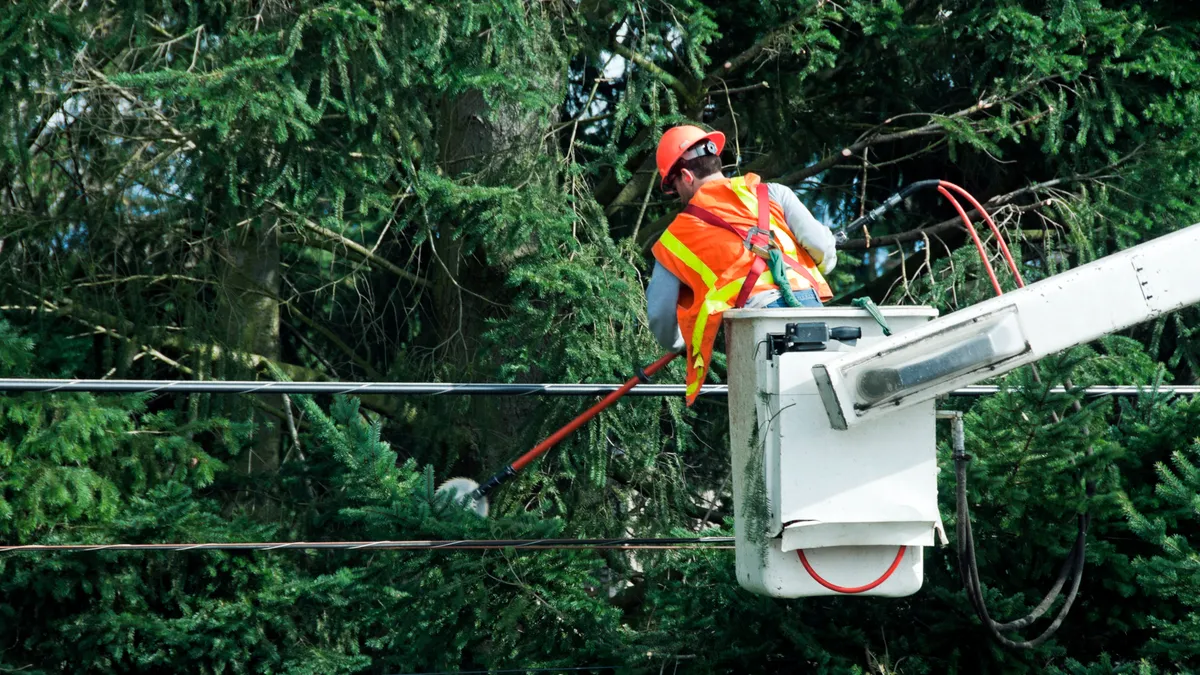Relying on last year's weather to predict this year's power outages is an increasingly risky proposition. Climate change is shifting weather patterns in every region, increasing the frequency and severity of storms, wind, and drought. For example, in the wake of the recent tropical storm Isaias, Con Edison suffered its second-largest outage ever, mainly due to damage from trees in high winds.
According to Con Ed: "The storm's gusting winds shoved trees and branches onto power lines, bringing those lines and other equipment down and leaving 257,000 customers out of power. The destruction surpassed Hurricane Irene, which caused 204,000 customer outages in August 2011."
Michael Gerrard, director of Columbia University's Sabin Center for Climate Change Law, told The Verge: "If you liked Isaias, you'll love the decades to come because they're only going to get worse. We need to prepare."
Good data and smart algorithms can help utilities get ahead of this problem, better predicting outages risks, and addressing them more precisely and proactively. This is transforming two of the most hands-on utility operations: tree trimming and outage response. New services powered by rich near-real-time data, machine learning and artificial intelligence are helping utilities target maintenance and preparation resources, to better protect assets and people from weather-related outages.
When utilities cannot keep a very close eye on both plant growth and weather patterns, it's hard to predict exactly where and when outages will probably occur. This introduces substantial uncertainty into planning for both vegetation management (to prevent outages), and for mobilization of outage recovery resources.
The typical way that utilities plan for these operations can be part of the problem. At most utilities, planning for vegetation management is governed mainly by cyclic schedules, past experience, and infrequent and incomplete information about current conditions from periodic ground-based and aerial inspections. Satellite imagery is available, but few utilities possess sufficient in-house capabilities for detailed analysis.
Internal silos are another complication. Although vegetation management and outage prediction are closely related functions, at many utilities they are handled by separate departments, with separate budgets, utilizing separate data and models. Furthermore, data analysis and IT exist in yet another silo, with their own budget and priorities.
Fortunately, new cloud-based services can support utilities on all of these fronts. IBM, which owns The Weather Company, continuously gathers massive amount of highly granular satellite imagery and weather data, which is analyzed by sophisticated artificial intelligence algorithms. As these algorithms gain more experience with more data, they learn how to provide even more actionable warnings to utilities about outage risks.
"This is no small feat," said Stuart Ravens, Chief Analyst for Thematic Research at GlobalData. "You need computer vision to extract from data and images where and how fast trees are growing. That demands vast resources for data storage and processing, and considerable technology and data expertise. For many utilities, it would be a luxury to be able to do this on their own. Data discovery has always been a hard sell."
Services that provide reliable, timely data-driven insights into outage risks can help bridge the common utility divide between information technology (IT) and operational technology (OT) — a key goal of digital transformation initiatives in many industries. Smart application of data and technology can unify operations and departments in ways that can deepen collaboration and expand benefits across the enterprise.
"IT departments always get involved with bringing our services to operational departments," said Bryan Sacks, Head of Work and Asset Optimization Solutions for IBM. "Usually, IT prioritize operations like vegetation management or outage response when directed by the business. But IT people get very interested in our geospatial platform, and that gives them more ideas about what the utility could do with this kind of data and artificial intelligence resources."
Ravens emphasized the value of bridging utility silos. "If you keep running vegetation management and outage prediction, or IT and OT, in separate silos, you just entrench those silos and lose so much," he said. "There should be a wider goal for every step you take. Keep half an eye on the future, where you want to take this next. Don't just use these tools to create new silos."










